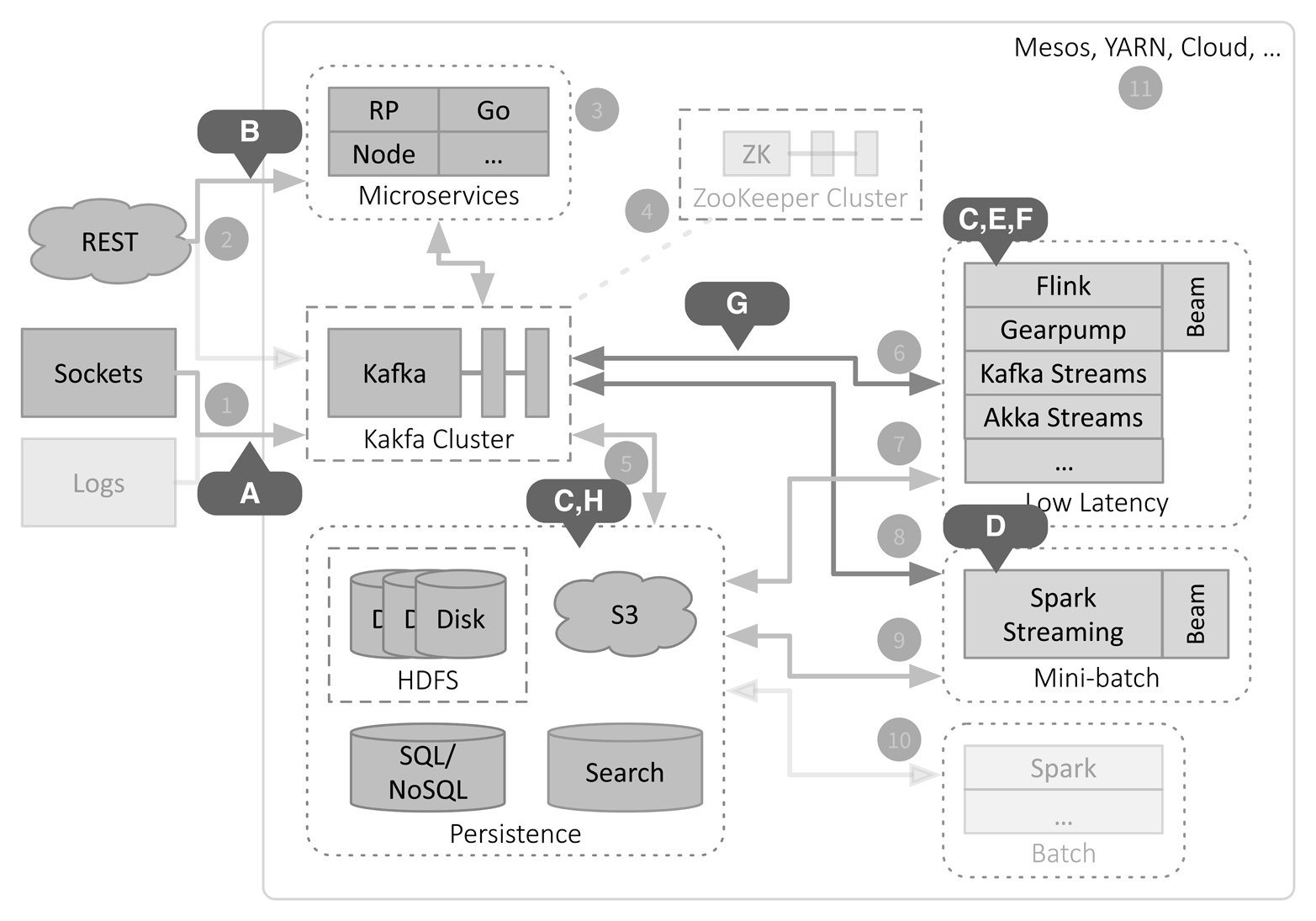Chapter 6. Example Application
Let’s finish with a look at an example application, IoT telemetry ingestion and anomaly detection for home automation systems. Figure 6-1 labels how the parts of the fast data architecture are used. I’ve grayed out less-important details from Figure 2-1, but left them in place for continuity.

Figure 6-1. IoT example
Let’s look at the details of this figure:
-
Stream telemetry data from devices into Kafka. This includes low-level machine and operating system metrics, such as temperatures of components like hard drive controllers and CPUs, CPU and memory utilization, etc. Application-specific metrics are also included, such as service requests, user interactions, state transitions, and so on. Various logs from remote devices and microservices will also be ingested, but they are grayed out here to highlight what’s unique about this example.
-
Mediate two-way sessions between devices in the field and microservices over REST. These sessions process user requests to adjust room temperatures, control lighting and door locks, program timers and time-of-day transitions (like raising the room temperature in the morning), and invoke services (like processing voice commands). Sessions can also perform administration functions like downloading software patches and even shutting down a device if problems are detected. Using one Akka Actor per device is an ideal ...
Get Fast Data Architectures for Streaming Applications now with the O’Reilly learning platform.
O’Reilly members experience books, live events, courses curated by job role, and more from O’Reilly and nearly 200 top publishers.

